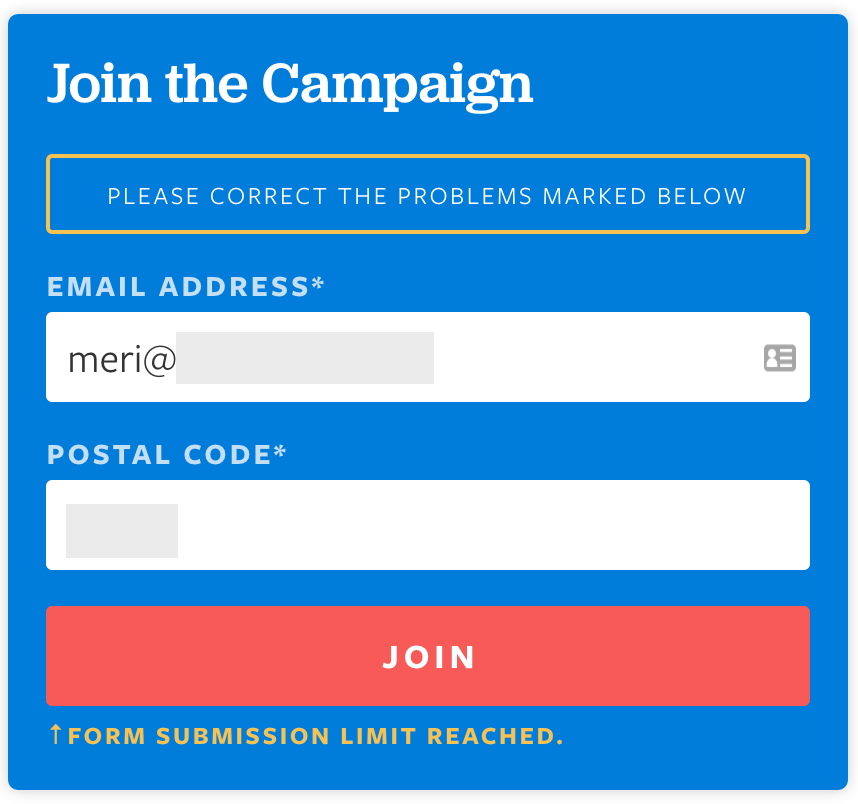About that permission thing
I wrote a few days ago about permission and how it was the key to getting into the inbox. It’s another one of those “necessary but not sufficient” parts of delivery. There are, however, a lot of companies who are using email without the recipient permission. These companies often contact me to help them solve their delivery problems. Often these are new companies who are trying to jumpstart their business on the cheap by using email.
The calls have a consistent pattern.
- Prospect explains to me what they’re doing, including how they are acquiring email addresses by buying lists, looking up relevant websites or taking addresses from appropriate business organization lists.
- I listen and then explain back that I can’t really help them. That most of how we fix deliverability problems is to focus on what the recipients wanted and asked for when they subscribed.
- Prospect argues with me about how I surely can help them. They know I can because what they’re doing isn’t illegal.
- I explain that the type of mail they’re sending, unsolicited prospecting emails, is one thing that filters are keeping out and there isn’t anything I can say to make those filters let the mail through.
- Prospect asks if there isn’t something they can do to make their mail go through. What if they authenticated? Or sent more mail? Or how about less mail? Surely companies can’t just block mail because it’s not opt-in.
I had one of these calls today. Ironically, a few days ago Facebook showed me a letter I “wrote” to a potential client more than 5 years ago after a similar phone call.
Dear Potential Client,
I realize it is upsetting that only 50 – 30% of your mail is getting delivered to the inbox. And I totally understand your desire to, somehow, find a magic wand to make the other 50 – 70% of your mail get delivered.
I am more than happy to take your money. I can even give you advice on minor technical changes that may increase your delivery by a few percentage points. However, as long as you insist that joining professional scientific societies and harvesting their membership lists is the only way to gather email addresses there isn’t much I can do to help you.
See, your delivery issues are, actually, email filters working as intended. Yes, the mail that you’re sending is perfectly legal. And, yes, there are people who send mail without permission and have few problems with delivery. But the fact that you’re calling me (repeatedly) means that you are not one of those people.
The underlying issue here is not that you’re sending too much mail, or that you’re sending it at the wrong time of day, or that you are sending unauthenticated mail. The underlying issue is that you’re sending mail that recipients didn’t ask for. I can contact the companies and organizations who are blocking your mail and ask for the blocks to be lifted. But I can tell you now, most of them are going to laugh in my face and did I mention there’s an extra fee for that? There’s always an extra fee for that kind of thing.
In this case, I’m not just an expert on email, I’m also an expert in your target market. See, you’re selling into biotech. You’re selling to scientists. These are my people. I may be 14 years out of academia, but these are still my people. As they are my people, I can say tell you some things about them. I can tell you they really don’t want mail from companies who harvest email addresses and spam them ads for used lab equipment. I can tell you that the best thing that can happen to your mail is that they will just hit delete.
Oh, you still want me to negotiate on your behalf? Well, I can do that. But given your method of collecting email addresses, it’s not out of the question that a particular biotech company is blocking your mail because you annoyed the chief scientist one too many times. And it doesn’t really matter how many employees at that company you get to opt-in to your mail, if the chief scientist says “no, they don’t get access to our employees” then you don’t get access to their employees.
Yes, yes, I know what you’re doing is legal. I know that permission is not the “gold standard” in direct marketing. But what I’m trying to explain to you is not that you need to change your business model, although you do if you expect to get more of your mail delivered. What I’m trying to tell you is that as long as you’re sending mail without permission, then you’re probably not going to get those blocks lifted.
Finally, I am not sure what you think Return Path is selling you. But you are not going to be able to become Return Path certified as long as you continue to harvest email addresses from professional societies. I believe that the sales people have told you the same thing I have, they are more than happy to take your money. That doesn’t mean they’re going to certify you. More power to you, though, if they’re going to certify you, then I wish you luck.
I’m very sorry, I don’t think I am the consultant for you.
While that was mostly written tongue in cheek, there are some truths in there.
 Interruption marketing is unwanted.
Interruption marketing is unwanted.
Maybe not everyone hates interruption based marketing, but many, many people do. In the consumer space ISPs have heard this message loud and clear and
Filters that are blocking unasked for mail are working as intended.
Filters are intended to stop unwanted mail. If a filter blocks mail but the sender can show that the mail is wanted, i.e., the recipients asked for it, then the folks running the filters will often make adjustments to allow the mail through. If there is no permission involved, there is zero incentive for the filter maintainers to make adjustments.
B2B filtering is different.
In the B2B space, the email systems are for the use of the business. Engagement isn’t nearly as important as in the consumer space (although this is changing for hosted mail like Google Apps and Office365). What can happen is one person can make a decision to block all mail from a sender. Once that decision is made, it’s difficult for outsiders to get that decision overruled.
Technical perfection isn’t enough.
Sending technically perfect mail doesn’t matter if you’re sending mail that is unwanted or unasked for. That mail is being blocked because people don’t want to receive it. And because the mail systems are not for general use. IBM used to have a policy that if you wanted to be unblocked, you had to explain to them how your mail supported IBMs business goals. If you couldn’t, the mail would not be unblocked. Other corporations have similar policies, even if they’re not published on a website.
